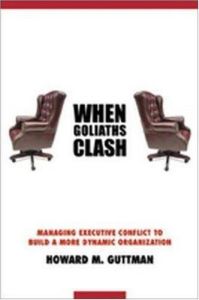
Read offline
Recommendation
This book is built on the premise that a lot of companies have, metaphorically speaking, the head of a dead elephant sitting in their boardrooms. The dead elephant’s head represents conflict, disagreement and rivalry between the executives themselves. No one wants to talk about the dead elephant’s head, because no one wants to admit that it’s there. Unfortunately, it’s a big, ugly reality that must be addressed sooner or later, and everyone knows it. Author and consultant Howard M. Guttman maps out a process companies can use to deal more openly and honestly with internal conflicts. He begins with the premise that conflict isn’t inherently bad and can even serve a productive purpose, if it’s properly managed and conducted according to the rules. getAbstract.com strongly recommends this book to corporate executives - and to the worker bees who have to duck when those Goliaths in the corner offices start slinging rocks.
Take-Aways
About the Author
As the principal of New Jersey-based Guttman Development Strategies, Inc., Howard M. Guttman has worked since 1989 to help international clients build effective teams, master conflict management, and align strategy with operations. Guttman’s experience includes executive positions at Automatic Data Processing (ADP) and Johnson & Johnson. Guttman has served as an adjunct professor at the Graduate School of Management at Rutgers University, as well as the Graduate School of Psychology at Fairleigh Dickinson University.

















Comment on this summary or Start Discussion